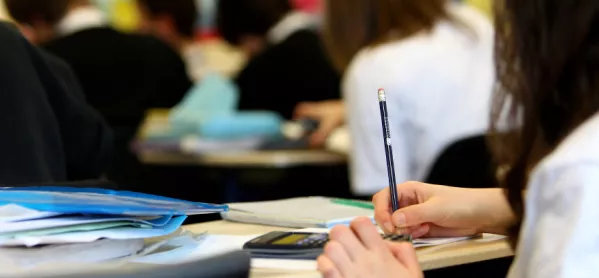- Home
- My five favourite ways to get a lesson started
My five favourite ways to get a lesson started

Here are five of my favourites that can be used by any teacher at any level to start any lesson on any topic:
1. The Hidden Picture
Students love a sense of intrigue. Disguising, blurring or selecting part of a picture works a treat. This works best when you are introducing a particular topic. This apple app is one way to pre-prepare an image where part of it is blurred out to a particular degree. If you want to do it live, which is often more effective, use the smart board spotlight tool to open up a small circle over a particular part of the image. Move the smartboard pen around the board to shine a spotlight on.
For example, history teacher Russel Tarr uses famous historical images with centre points removed. For example, the Tiananmen Square protests minus the tank and the protester! Ask students to guess what the image is or the missing part. This could work equally well within Science when asking students to guess the missing element in the layout for an experiment. Or in PE, to vanish out the particular movements of a football or tennis player in a photograph and asking students to demonstrate what that movement should be practically.
2. Hexagon Connections
Create yourself a visual hexagon template. Here is a free one available via TES. The idea is that each hexagon is filled with a different image and there are links that exist between each connection. In pairs or fours, students are challenged to explain the different connections that exist between them. This could be in the form of a competition. Take it further by creating three or four different visual hexagon diagrams and ask students to place the hexagons side by side and try to make connections between different points on different hexagons. John Mitchell demonstrates this in practice here.
3. Secret Picture
This is perfect for starting any lesson where there is something visual that you would like students to remember. Examples include - an image of a motte-and-bailey castle in History, an exercise routine in PE, a circuit board in ICT or the layout of different altars in RE. Simply blow up the specific image or images on A3 paper. You only need one copy. Put the students into groups of three or four. One student from each group will be the viewer and describer while the others will be the drawers. Ask the viewers to come to the front of the class and give them one minute to study the given image. They then go back to their group and try and relay what they have seen. Results can be amusing. Repeat the process three or four times. Then, ask each group to display their completed image.
4. Key Word Bingo
Every subject boasts an array of key words that require students to know definitions for. In this activity, which I first saw demonstrated by Kate Jones at TMHistoryIcons, students are given a board with a number of boxes on it. Within each box is a different key word that will require a definition. Students are given a dice. The first player rolls a dice onto the board. Whichever box it lands on will require the students to reference the definition of that word or phrase. Students in small groups can play the game together and keep scores. Don’t worry about repetition as this will test recall too.
5. Verbal Tennis
Students need to know the basic scoring of tennis before you start, so beware. Write down a number of key topics you have studied recently on the board. Students play out a game of word association tennis, trying to reference as many key words from the given topics as they can in quick fire fashion, taking turns, one after the other. I always say a limit of five seconds between each word. This is not only great fun for the students but also is great for recalling key themes and ideas from previous topics. This can be used at the start of any lesson, in virtually any subject, with zero preparation on the part of the teacher.
Tom Rogers runs rogershistory.com and tweets at @RogersHistory
Want to keep up with the latest education news and opinion? Follow TES on Twitter and like TESon Facebook
Keep reading for just £1 per month
You've reached your limit of free articles this month. Subscribe for £1 per month for three months and get:
- Unlimited access to all Tes magazine content
- Exclusive subscriber-only stories
- Award-winning email newsletters



